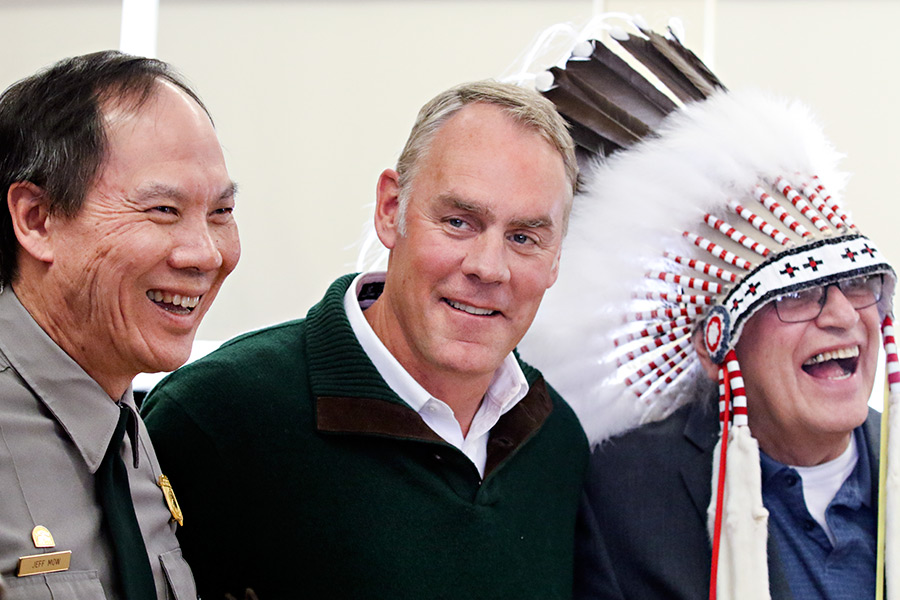Zinke Alters Interior Overhaul After Pushback
The changes follow complaints from a bipartisan group of Western state governors that Zinke did not consult them before unveiling his original plan last month
By Justin Franz
BILLINGS — U.S. Interior Secretary Ryan Zinke is revamping a planned sweeping overhaul of his department with a new organizational map that more closely follows state lines instead of the natural boundaries he initially proposed, he told The Associated Press on Friday in an exclusive interview.
The changes follow complaints from a bipartisan group of Western state governors that Zinke did not consult them before unveiling his original plan last month. The agency oversees vast public lands, primarily in the U.S. West, ranging from protected national parks and wildlife refuges to areas where coal mining and energy exploration dominate the landscape.
Zinke told AP that his goal remains unchanged: decentralizing the Interior Department’s bureaucracy and creating 13 regional headquarters.
“At present we are mismanaging and squandering our assets through a layered bureaucracy that reflects a very old department that really has not reorganized since the turn of the last century,” he said. “We will be moving assets to the front lines and moving authority to make decisions and, I would argue, better decisions to the front lines.”
The redrawn map shows that states such as Colorado, New Mexico and Wyoming would fall within a single region instead of being split among multiple regions. Other states remain divided, including California, Nevada, Montana and Oregon.
Aspects of the original map — which was first made public by AP — remain, with some regions labeled according to river systems, such as the Upper Colorado Basin and the Missouri Basin. But the new lines tend to cut across geographic features and follow state lines, not boundaries of rivers and ecosystems.
The new proposal resulted from discussions with governors, members of Congress and senior leaders at the agency, Interior officials said. Zinke spokeswoman Heather Swift said the original proposal had been a “discussion draft” rather than a finished document and was now being refined through a collaborative process.
Zinke, a former Republican congressman from Montana, already has imposed major changes at the 70,000-employee Interior Department. He has rolled back regulations considered burdensome to the oil and gas industry and reassigned dozens of senior officials who were holdovers from President Barack Obama’s administration.
The vision of retooling the department’s bureaucracy plays into longstanding calls from politicians in the American West to shift more decisions about nearly 700,000 square miles (more than 1.8 million square kilometers) of public lands under Interior oversight to officials in the region.
Some Democrats have speculated that Zinke’s true motivation for the overhaul is to gut the department, noting that more than 90 percent of its employees already work outside Washington, D.C.
Zinke contends that he’s trying to streamline Interior’s management of public lands by requiring all of the agencies within the department to use common regional boundaries, including the Bureau of Land Management, National Park Service and Fish and Wildlife Service.
Congress has the final word on the proposal.